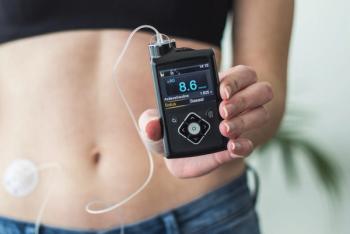
Point-of-care testing opens door to new patient-care model
CLIA-waived tests may be the next big thing.
Pharmacy is a second career for Patrick Adams, PharmD, who at age 45 became a pharmacist in his home state of Hawaii. With a view to expanding the services that his community pharmacy offered, he set out to persuade HMSA, a major health plan in his state, to allow him to offer the Timed Up and Go (TUG) test to assess an older person's mobility function.
Patrick AdamsIn spite of the fact that the annual cost of falls to the healthcare system in Hawaii totaled $250 million, neither HMSA nor any other healthcare provider wanted to support the service.
As director of pharmacy at Foodland Pharmacy for 12 years, Adams also understands the benefits of offering laboratory tests for glycosylated hemoglobin (HbA1c) and cholesterol screenings for patients. But how could a pharmacy be paid directly for lab tests?
Then he heard a fellow pharmacist talking about CLIA-waived tests.
Turn your pharmacy into a lab
Adams again approached HMSA, an independent licensee of the Blue Cross and Blue Shield Association and one of the largest health plans in his state, and asked about reimbursement for CLIA-waived tests. HMSA agreed that these tests were within the scope of pharmacy practice for his state, although the health plan did not have any contracts demonstrating that a pharmacist could provide these assessments.
When HMSA asked about his expertise with CLIA-waived tests, Adams explained that "this testing doesn't require any more expertise than if you were to go to a lab and have a technician swab your throat or nose," he recounted.
"I said, 'You pay the labs,' and they said, 'Yes.' So I said, 'If I were a lab, you would pay me.' And they said, 'Yes.'"
Adams then decided to take the next step and turn his pharmacies into labs. Then he contracted with HMSA to offer -and be paid for - CLIA-waived tests. This contract allows him to bill as a medical provider, because his pharmacies are now operating as laboratories.
But what about training for all the pharmacists employed in his nine pharmacies?
Point-of-care certificate program
Last year, during a multi-city tour, the National Association of Chain Drug Stores (NACDS) launched a national certificate program to train pharmacists to perform "point-of-care testing" and other health assessments. To qualify for the program, pharmacists had to be willing to participate in a two-day program and learn how to teach other pharmacists interested in performing point-of-care testing, also known as CLIA-waived tests.
Adams undertook the 20-hour accredited program, which included 12 hours of home study and eight hours of live training in disease states. He then trained all 20 pharmacists who practice at Foodland Pharmacy, which offers a select number of CLIA-waived tests, including influenza, Streptococcus, tuberculosis, and croup. These tests are waived under the Clinical Laboratory Improvement Amendments (CLIA) of 1988, allowing pharmacists to charge the patient directly or bill through a third-party payer.
"Point-of-care testing is a term that pharmacies are using for about five basic tests, but there are probably many more tests that [pharmacies] can do," Adams said.
The EMR connection
Foodland Pharmacy will soon be connected to HMSA's platform, known as Cozeva, which houses patient's electronic medical records (EMRs). This platform allows the pharmacist to go into the dashboard and determine possible gaps in patient care.
"Filling the gaps in care is really important to the Medicare STAR rating program and to the health plan," Adams said. "I can do A1c tests, conduct medication therapy management, and then test again to see if there is any improvement."
To be paid under a healthcare capitation plan, pharmacists must be able to show outcomes. "That is the reason that assessments are so important," he said.
Newsletter
Pharmacy practice is always changing. Stay ahead of the curve with the Drug Topics newsletter and get the latest drug information, industry trends, and patient care tips.




































































































































